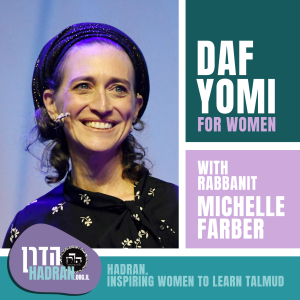
Pictures
Today’s daf is sponsored by Lisa Wolkenfeld for the continued refuah shleima of Yakira Leeba bat Sara Gita.
Today’s daf is sponsored by Stacey Goodstein Ashtamker in loving memory of her father in law Eliyahu Ashtamker on the shloshim and her father Jack Goodstein. “My father-in-law brought his young family including my husband on aliyah from India in 1970. He was a well-known Chazan in the B'nei Israel community. My father Jack Goodstein whose shiva ends today, was a kind, warm, smiling, smart man who will be missed by all who knew him. May both their neshamot have an aliyah.”
If someone left on a business trip and found out while away that a relative died, can he continue to do business? If so, in what manner? At what point do laws of mourning, such as turning over one's bed begin? The details of turning over beds is discussed - i.e. they are put back for Shabbat on Friday afternoon, which beds in the house need to be turned over and which do not. There are different types of beds - some need to be turned over and some need to be stood up on their sides. One such bed is called a dargash. There is a debate about what type of bed it is. Several questions are raised on Ulla's definition of the dargash, most are rejected but we are actually left with one difficulty and therefore an alternative is suggested. One can sweep and clean dishes in a mourner's house. What about putting spices and incense to use as air fresheners? People would bring food to the mourners for the seudat havraa. The weather people would bring it in fancy dishes and the poor in simple dishes. In order not to embarrass the poor, they instituted that only simple dishes would be permitted. A series of changes in mourning practices were instituted in order to protect the poor or others from embarrassment. For example, they used to show the body of the dead but since the poor had faces blackened from famine, they stopped this practice. Also burial shrouds became much simpler so as not to differentiate between rich and poor. Rabban Gamliel led the way on this and even in his own death was dressed in simple shrouds. Certain practices are different on chol hamoed and certain ones remain the same. For example, there is an attempt to limit eulogies. However, for a Talmud scholar, this is overridden. At what point should people visiting the mourners leave the house? A mourner or a sick person do not need to stand up in respect for the nasi. Mourners should eat food from others at the seudat havraa - from where is this derived? Until one is buried, the people of the city should not be working as they need to help deal with the burial. One should not mourn excessively over one's relative. A story is brought of a woman who mourned excessively over her son and was punished.
More Episodes
 2024-04-15
2024-04-15
 2024-04-14
2024-04-14
 2024-04-12
2024-04-12
 2024-04-12
2024-04-12
 2024-04-11
2024-04-11
 2024-04-10
2024-04-10
 2024-04-08
2024-04-08
 2024-04-07
2024-04-07
 2024-04-05
2024-04-05
 2024-04-05
2024-04-05
 2024-04-04
2024-04-04
 2024-04-03
2024-04-03
 2024-04-02
2024-04-02
 2024-04-01
2024-04-01
 2024-03-31
2024-03-31
 2024-03-29
2024-03-29
 2024-03-29
2024-03-29
 2024-03-28
2024-03-28
 2024-03-27
2024-03-27
Create your
podcast in
minutes
- Full-featured podcast site
- Unlimited storage and bandwidth
- Comprehensive podcast stats
- Distribute to Apple Podcasts, Spotify, and more
- Make money with your podcast
It is Free
- Privacy Policy
- Cookie Policy
- Terms of Use
- Consent Preferences
- Copyright © 2015-2024 Podbean.com





